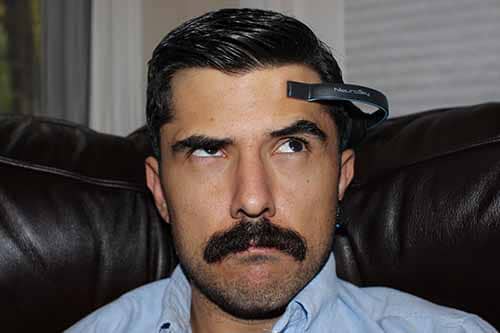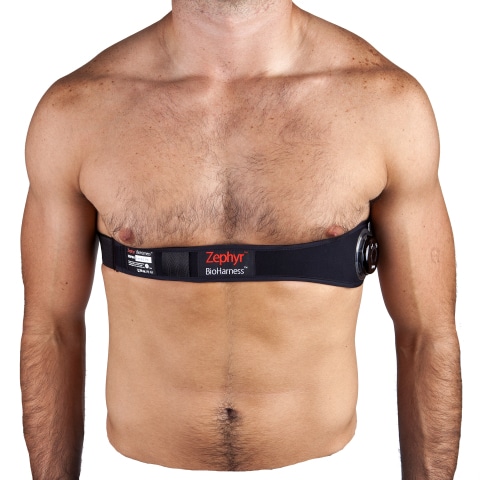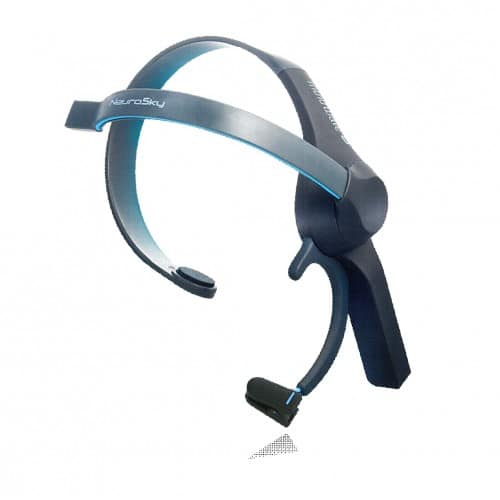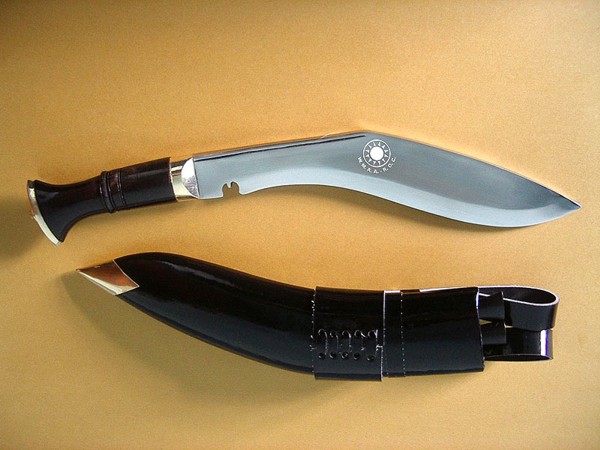
Two important skills for any man, and especially any would-be sheepdog are 1) managing stress 2) and remaining resilient in the face of extreme adversity. In our post about managing stress arousal for optimal performance, we broke down what happens to the body and mind as it deals with increasing levels of stress. Basically, as stress levels rise, our mental and physical performance deteriorates.
During my research about developing a sheepdog mentality, I kept coming across reports on how the U.S. military is spending tens of millions of dollars each year researching the vital question of how to make soldiers more resilient. The research has two goals. First, the military wants to create highly-effective soldiers who can perform at the highest levels, even under extreme stress. Second, they hope that by training soldiers to be more resilient, they can reduce the skyrocketing incidents of PTSD.
In 2008 the U.S. Army developed a resilience training program called Battlemind (now known as Ready and Resilient) in response to increased PTSD, mental health decline, and suicide rates among soldiers returning from the frontlines. As part of their basic training, all incoming recruits are given 10 days of resilience instruction designed to fortify their mental toughness. In addition to the usual push-ups and shooting drills, soldiers are also taught how to meditate, how to use controlled breathing to reduce the stress response in their minds and bodies, and fundamental resilience skills such as how to avoid catastrophizing and how to change your explanatory style in the face of failure or setbacks.
Besides giving soldiers basic cognitive therapy tools they can use for stress management, the Department of Defense has also experimented with technology that allows soldiers to monitor their physiological response to it. The idea is that if soldiers can see how their minds and bodies are reacting to stress, they can learn how to control this response, increasing their ability to stay calm and bounce back quickly in tough situations.
The real-time monitoring of one’s physiological responses is called biofeedback. And it’s straight out of a weird techno-hippie sci-fi novel (or so it seemed to me when I first learned about it).
Proponents would argue, however, that far from being hippie dippie, it’s a highly effective way for soldiers and civilians alike to learn how to manage stress, clear the mind, improve focus, and become all-round more mentally and physically tough and resilient.
Does biofeedback live up to its claims? I decided to experiment with it to see if it could help me improve myself.
Below, I summarize how biofeedback works, give a report of my experience using it, offer a list of tools if you want to try it out too, and then provide my verdict on whether or not biofeedback can help the average Joe become a better man and a more effective sheepdog.
What is Biofeedback?
Biofeedback’s origins go back to ancient Hindus and Buddhists, but it wasn’t until after World War II that biofeedback — as it’s used today — came into existence.
Biofeedback works by attaching instruments to your body to measure physiological activity like brain waves, heart rate, blood flow body temperature, respiratory rate, and muscle tension. You (and often a doctor trained in biofeedback therapy) can see these measurements in real-time on a computer screen. Because you are able to get immediate feedback on your typically hidden mental and physical responses, you can experiment with modifying your thinking and breathing to facilitate desired physiological changes.
Here’s a simple example of biofeedback. Let’s say you’re chronically frazzled. You hook yourself up to a heart rate monitor, which reveals a resting heart rate that indicates that you are indeed stressed out. So you try different breathing and muscle relaxation exercises to bring your heart rate down. The monitor gives you real-time feedback as to whether these exercises are working.
A typical biofeedback session will measure one or more of the following physiological activities:
- Electromyogram (EMG). This measures muscle activity and tension. This measurement is often used for patients wanting to get a better handle on back pain, chronic pain, headaches, and incontinence.
- Heart rate variability (HRV). This measures heart rate. As we discussed in our post about stress arousal, as stress increases, our heart rate increases. According to biofeedback, knowing your heart rate is increasing should allow you to perform exercises to lower it. Heart rate monitoring is typically used to help patients gain control of their stress and anxiety.
- Neurofeedback or electroencephalography (EEG). This measures your nervous system — specifically, brain waves. This biofeedback measurement has been used for treating attention deficit hyperactivity disorder (ADHD), anxiety, stress, and PTSD.
- Thermal feedback. This measures skin temperature. Because our body temperature decreases when facing extreme psychological stress, being aware of your body temperature allows you to take steps to manage that stress.
- Electrodermal activity (EDA). This measures sweat. When we’re nervous and anxious, we perspire more. Galvanic Skin Response monitoring devices (also known as GSR devices) measure this.
Independent randomized controlled studies have shown biofeedback is an effective way to reduce high blood pressure, eliminate migraines, reduce anxiety, and even treat constipation. Some studies dispute biofeedback’s effectiveness to treat ADHD and PTSD, but the military feels it has gotten good results on this front.
To see if I could achieve the same positive results found in these studies, I decided to conduct my own personal experiment with biofeedback.
My Own Experiment With Biofeedback
Until recently, if you wanted to take part in biofeedback training, you’d have to find a specialist in your area and visit their facility so you could hook yourself up to their sensitive medical sensors. A typical professional biofeedback session can set you back a hundred dollars.
But during the past ten years, the price of medical sensor technology has decreased enough that they’re now accessible to the average consumer so that home biofeedback is a viable option. Heart rate monitors are common at gyms and running trails around the world, and brain activity sensors are becoming so cheap that they’re popping up on toys.
My research into how the military uses biofeedback to increase soldiers’ mental toughness led me to the National Center for Telehealth and Technology (or T2), a division within the Department of Defense that researches the psychological health of military personnel.
T2 has produced several free apps to help current and veteran soldiers reduce stress. While they’re designed for soldiers, civilians can download them too. Tactical Breather is one; Breath to Relax is another.
The one that caught my eye, though, was their BioZen app.
BioZen is a free biofeedback app for Android smartphones that uses Bluetooth-enabled biosensors placed on the body to give patients suffering from anxiety, stress, and depression an affordable biofeedback experience.
BioZen measures EEG (brain wave activity), EMG (muscle tension), skin temperature, respiratory rate, and ECG (heart rate variability or heart rhythm).
Besides a real-time chart of the above measurements, BioZen also has a meditation feature in which users manipulate an image on their smartphone screen with their mind and heart rate activity.
It’s pretty cool.
As your brain activity gets in a more meditative state, a sun in a landscape setting starts to get brighter and brighter; as your heart rate gets slower — indicating a low stress level — a tree and birds appear in the foreground. BioZen records your physiological activity during these meditation sessions and gives you a score so you can see how you’re progressing with your meditation and stress reduction practice.
Intrigued by the concept of accessible biofeedback, I downloaded the free BioZen app. While the app was free, the biosensors and biofeedback equipment wasn’t. BioZen works with just a few compatible devices, and all of them are unfortunately expensive.

The Zephyr BioHarness. (Not my floating torso.)
To measure my heart rate, respiration, and skin temperature with BioZen I needed a Zephyr BioHarness. It’s a sophisticated consumer heart rate monitor used in the athletic and tactical fields to monitor stress response. The BioHarness set me back $549. Eesh…
To measure my brain wave activity, I needed some kind of biosensor-laden headband. I chose an EEG measuring device called the Mindwave Mobile. The Mindwave is a futuristic looking headset with a small sensor that rests on your forehead above your left eyebrow. Another sensor clips on to your left earlobe. Wearing it makes me feel like an extra on Star Trek.
After sinking nearly $700 on biosensors, I began to have some buyer’s remorse and serious doubts about this experiment. “Will this stuff even work?” “Am I being bamboozled by 21st century snake oil?”
Doubts notwithstanding, I opened up BioZen to start my first meditation session. An empty and dark landscape scene filled my phone’s screen. As my heart rate slowed and steadied, a tree and some birds appeared.

Heart rate made the tree appear, but because my mind was all over the place, no sun.
But the scene was still dark, with no rising sun in sight.
To illuminate the screen, I had to get my mind in a meditative state. I kept checking to see if a sun had appeared.
Nothing. Still darkness.
I tried to empty my mind and just focus on my breathing. I’d get a second or two of blissful nothingness, but immediately my “monkey mind” would return. Ten minutes into my meditation session, I still wasn’t able to create light on my landscape scene. Just when I started to think I had wasted my money on this silly looking headset, it happened.

Hark! Yonder light! I’m becoming more meditative.
A small, dim sun rose above the horizon. I was excited – hope at last! I tried to harness all my brainpower to maintain the sun, but it disappeared as quickly as it appeared. For the next ten minutes of my meditation session, I would make the sun appear and disappear with nothing but my mind. I felt like Neo learning how to manipulate the Matrix.
When my session finished, I reviewed my results. While I had normal resting heart and breathing rates throughout my session (indicating low physiological stress), my brain wave activity indicated that my mind had been quite scattered.
Over the next few weeks, I trained two times a day for 20 minutes a session with BioZen. After the third day I started seeing improvements in both my heart rate and brain wave activity. It’s hard to describe how I did it, but I sort of figured out how to indirectly control my involuntary bodily functions. The instantaneous feedback that BioZen provided allowed me to experiment on the fly with different techniques and strategies to relax and focus.
I lowered my resting heart rate to 45 BPM and could maintain it there for the entire meditation session. Before the biofeedback training, my normal resting heart rate during a meditation session was 70 BPM, which is average. A resting heart rate between 40 and 50 BPM is what you see among well-trained athletes.

Now I can use my brain to make the sun shine brightly for the entire meditation session.
My scattered brain improved as well. After three days of biofeedback training, I successfully got the little digital sun to fully rise and illuminate the screen, indicating that I reached a highly meditative state.
After weeks of training, I’m now able to keep the digital landscape fully illuminated for almost the entire meditation session. The chart that tracks my meditation score has pretty much followed an upward trajectory. I had a few distracted sessions, but for the most part my mind is much more Zen.
Overall, I’ve been happy and surprised by the results of biofeedback training with BioZen. According to the data, I’m much less stressed and more even-keeled than before I started biofeedback training. My resting heart rate — even when I’m not meditating — is lower and my brain activity shows I’m much more relaxed and focused.
Subjectively, I can report I feel much more calm than I did before biofeedback training. I’m sort of anxious and neurotic by nature, so it’s nice to feel less on edge
I also feel much more focused and present in all my daily activities, be it working or hanging out with my family.
I think the biofeedback exercises have boosted my well-being and resiliency too. Getting agitated in the face of little work-related annoyances has long been a weakness for me, and I feel like I handle setbacks better than I did before. I still have a tendency to be impatient and get frustrated quickly when a lot of Q3 demands come rolling in, but I shake it off and get back on track much quicker than before. Would this increase in my resiliency carry over to more of a crisis situation? Only time will tell.
Were these perceived benefits the result of a placebo effect, however? With all things like this, there’s certainly a chance that these little gizmos act like Dumbo’s Magic Feather. I’m open to that possibility. Even if that’s the case, I’m okay with it. If it works, it works. However, as mentioned above, research suggests there’s more than a placebo effect going on.
Whether it’s placebo or honest-to-goodness efficacy, I’ve made biofeedback training a regular part of my life. I treat my sessions with BioZen sort of like my workouts at the gym. It’s just something I do, no matter what.
Biofeedback Tools for the Average Joe
Has your curiosity been piqued and you’re thinking you’d like to give biofeedback a try?
If you’d like to practice biofeedback regularly and don’t want to plunk down the thousands it costs for multiple sessions at a professional facility, below I highlight a few of the biofeedback devices available to consumers.
Heart Rate Sensors
Zephyr BioHarness. What I use. It’s compatible with the BioZen app, but also has its own app that you can use to monitor your heart and respiratory rate. As I mentioned above, I’ve been impressed with the results using my BioHarness, and it’s now an everyday fixture in my life.
While it’s cheaper than a professional heart and breathing rate monitor, the Zephyr BioHarness is still freaking expensive at $549. If you just want to dabble with biofeedback, go with something cheaper. Once you decide to go full hog with the training, then you might consider investing in this device.
eMwave2. This is a small device that measures your heart rate and then helps you become more “coherent” (basically lowering your heart rate and making it more steady) though a simple breathing exercise. The eMwave2 seems to be popular among the New Age/Secret folks. I haven’t used it personally, but I can see it being an effective tool for reducing your physiological stress response.
A plain old heart rate monitor. You don’t need some fancy-pants BioHarness or heart rate trainer to get the benefits of heart rate biofeedback. Any heart rate monitor will do the trick. There are plenty of sub-$100 devices on the market. While most of them can’t measure respiratory rates nor work with BioZen, you can still use a heart rate monitor to learn how to control your stress response to day-to-day activities.
Brain Wave Activity Sensors
Let’s get this out of the way right off the bat: Consumer devices that measure brain wave activity are not as sensitive and accurate as the devices you’ll find in a professional laboratory. However, I imagine in the next five to ten years, we’ll see more accurate and affordable consumer brain wave monitors. Nonetheless, the devices on the market now do a decent job considering what you’re paying.
Mindwave Mobile. This was what I used, and still use when I can get it to work. It will set you back $127. It works with BioZen, but is also compatible with several other apps on the market. However, the other apps are terrible.
My biggest gripe about Mindwave Mobile is its flaky performance. When it works, it works fine. But sometimes I’d have trouble connecting the device to my smartphone. I don’t know what caused the Bluetooth troubles. I’m looking into it, but it appears other people have had this problem too.
Brain Athlete. Does pretty much the same thing as Mindwave Mobile. It’s geared more towards athletes wanting to use bio/neurofeedback to increase focus and mental speed.
Within the next year, several affordable neurofeedback sensors will hit the market. Here are three I’m looking forward to learning more about:
- Melon Band. The Melon will launch early next year. It measures your brain activity and the accompanying app lets you know if you’re focused or meditative.
- Muse Band. It’s out and available for purchase right now. Comes with an app.
- Brain Sport. The Brain Sport is an EEG device geared more towards athletes to help them improve their focus, mental speed, and stress response.
Do You Really Need All This Stuff?
I’m sure some of you reading this are thinking, “Bah! You don’t need all these high-tech gizmos. Just meditate and do some breathing exercises and you’re good to go.”
I agree 100%.
You don’t need these gadgets and apps to become cool, calm, and collected. By doing basic meditation regularly practicing mindfulness regarding your body’s responses to stressors, you’ll be well on the path to developing your mental and physical resilience.
But based on my own experience with these devices and apps, biofeedback can help facilitate this process. While warriors and philosophers have been training their minds with only their minds for thousands of years, I think there’s a case to be made that in a time of unprecedented technological distraction, sharpening your focus has never been more important, or difficult. Any extra tools that can help increase your ability to concentrate are invaluable in my book. Fight fire with fire I say.
Mental and physical resilience is an ethereal thing. It’s hard to judge whether you’re improving because you can’t see whether cognitive exercises like meditation are having any actual effect on your physiology, other than what you may feel. And for this reason, it’s hard to get motivated to do those exercises. Biofeedback provides hard numbers and data you can use to see your progress, which both enlightens and inspires. I definitely feel like my progress with meditation and mental resilience increased more in the few short weeks of biofeedback training than it has in the past two years I’ve regularly meditated.
Whether you feel stressed, anxious, and overwhelmed, or you’re looking to up your mental game, and perform at your best on the battlefield or in everyday life, give biofeedback a try to see if it works for you.
Have you tried biofeedback? What’s been your experience? Any tips for people interested in getting started? Share with us in the comments!







